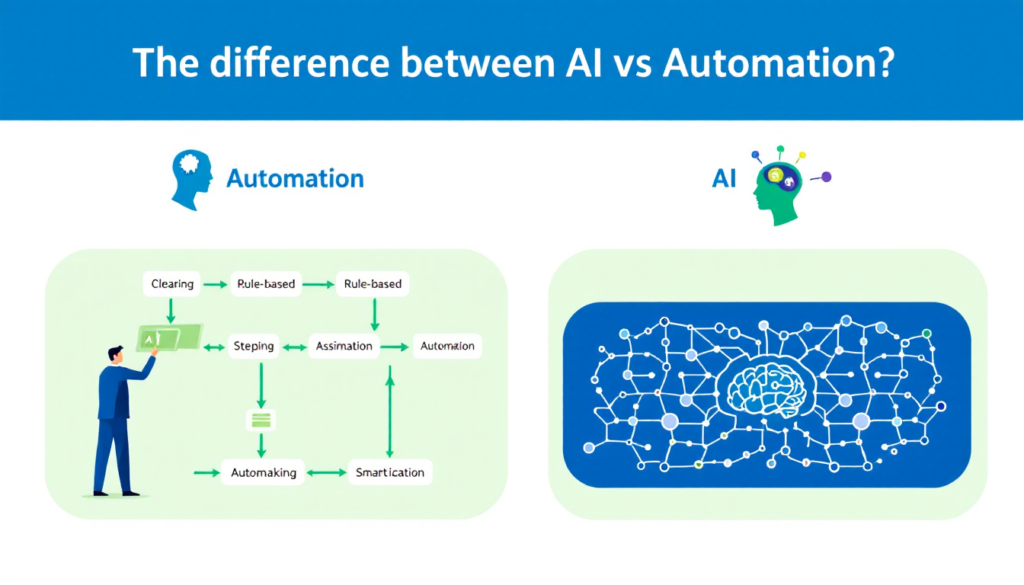If you’re feeling confused by all the AI and automation talk lately, you’re not alone. These terms get thrown around interchangeably, but they’re actually quite different – and understanding the difference could save you time, money, and a lot of frustration.
The Simple Explanation
Automation is like having a really reliable assistant who follows a recipe perfectly every time. You tell it: “When someone fills out this form, send them this email, then add them to this spreadsheet.” It does exactly what you programmed, no thinking required.
AI is like having an assistant who can make decisions and adapt. You tell it: “Help customers with their questions” and it figures out what each person needs and responds appropriately, even to questions you never specifically programmed.
Why This Matters for Your Business
Most business owners don’t need to become AI experts, but understanding which tool fits which problem can save you a lot of headaches.
Use Regular Automation When:
- You have a clear, repeatable process
- The steps are always the same
- You want predictable, consistent results
- You’re dealing with data transfer between systems
Example: Every time someone books a consultation, send them a confirmation email, add them to your calendar, and create a customer record. Same process, every time.
Consider AI When:
- You need decision-making capability
- Each situation might be different
- You’re dealing with text, images, or complex data
- You want the system to learn and improve
Example: Automatically responding to customer emails with helpful answers, even when the questions vary significantly.
The Reality Check: Most Businesses Need Automation First
Here’s what we’ve learned from talking to hundreds of small business owners: 80% of their problems can be solved with basic automation, not AI.
Think about your daily frustrations:
- Manually entering data from one system to another
- Sending the same emails over and over
- Creating reports by copying and pasting from multiple sources
- Following up with customers at specific intervals
These are all automation problems, not AI problems.
When AI Actually Makes Sense
AI becomes valuable when you’re dealing with:
Customer Communication: AI can handle varied customer questions, understand intent, and provide helpful responses without you writing scripts for every possible scenario.
Content Creation: AI can help write first drafts of emails, social media posts, or product descriptions based on your guidelines and style.
Data Analysis: AI can spot patterns in your business data that you might miss, like which customers are likely to buy again or when equipment might need maintenance.
Document Processing: AI can read invoices, contracts, or forms and extract the important information without you manually typing everything.
The Hybrid Approach That Actually Works
The smartest businesses we’ve seen use both together:
- Start with automation for clear, repetitive processes
- Add AI where decision-making or adaptability is needed
- Use automation to handle what AI decides
Example: AI reads incoming emails and decides which department should handle them, then automation routes them to the right person and sets up the appropriate follow-up sequence.
What This Means for You Right Now
Before you invest in any AI solution, ask yourself:
- Can this be solved with simple automation?
- Do I really need decision-making capability, or do I just need reliable task execution?
- Am I trying to use AI to solve an automation problem?
Getting Started
If you’re just beginning your automation journey, start with the basics:
- List your most annoying repetitive tasks
- Pick one that follows the same steps every time
- Use simple automation tools to fix that first
- Once you’re comfortable with automation, then explore AI for more complex challenges
AI is powerful, but automation is often faster to implement and more reliable for most business needs. The goal isn’t to use the fanciest technology – it’s to solve real problems efficiently.
What repetitive tasks are driving you crazy right now? Start there, and let technology serve your actual needs rather than chasing the latest trends.
